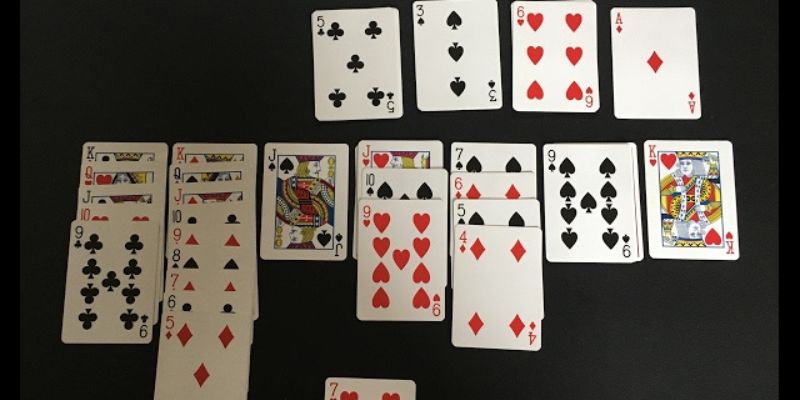Solitaire, also known as the patience card game, is a timeless classic that has captivated players for decades. Simple to learn yet challenging to master, it’s the perfect solo pastime. Whether you’re an experienced player or new to the game, understanding how to set up Solitaire is essential to fully enjoy this engaging activity.
Setting up Solitaire requires a basic 52-card deck, a suitable playing space, and a bit of patience. This guide explains the setup process step-by-step, explores the rules, and answers common questions, ensuring you’re ready to play.

Setting Up Solitaire
Solitaire is typically played with a single deck of 52 cards. The game setup consists of creating a tableau (playing area), stockpile (draw pile), and foundation piles (goal area). Here’s how to set it up:
1. Prepare the Deck
Before you begin, shuffle the deck thoroughly. Remove jokers or extra cards, leaving only the standard 52 playing cards. This ensures a random and fair game.
2. Create the Tableau
The tableau consists of seven piles arranged left to right:
- Start with the first pile, placing one card face-up.
- For the second pile, place one card face-down, then one face-up on top.
- Continue this process, adding one more face-down card to each subsequent pile, until the seventh pile has six face-down cards and one face-up card.
In total, you will have 28 cards placed in the tableau, with only the top cards of each pile visible.
3. Set Up the Stock and Foundation
The remaining 24 cards form the stockpile. Place this stack face-down above or next to the tableau. Leave space for four foundation piles, which will eventually hold cards sorted by suit in ascending order from Ace to King.
You Can Also Play: Google Solitaire
Playing Solitaire After Set Up
Now that the game is set up, the objective is to move all cards to the foundation piles. Here’s how gameplay progresses:
- Moving Cards in the Tableau: Arrange cards in descending order (e.g., King to Ace) while alternating colors. For example, a red 6 can only be placed on a black 7.
- Flipping Cards: When you move a face-up card, turn over the next card in the pile to reveal it.
- Using the Stockpile: Draw cards from the stockpile to find playable options when there are no moves in the tableau.
The game ends successfully when all foundation piles are complete, each holding a full suit from Ace to King.
Tips for Setting Up and Playing Solitaire
- Use a Flat Surface: A stable, flat surface ensures smooth gameplay and prevents cards from shifting out of place.
- Stay Organized: Keep the tableau neat to avoid confusion about card placement.
- Plan Moves Carefully: Solitaire requires strategy. Think ahead to avoid running out of moves.
With this step-by-step guide, you now know how to set up Solitaire and enjoy this timeless card game. Whether playing for fun or challenging your strategy skills, Solitaire remains a rewarding experience for all ages.
Also Read: How to Play Solitaire
FAQs
How Many Cards in Solitaire?
Solitaire uses a standard deck of 52 cards, excluding jokers or extra cards. The setup involves 28 cards in the tableau and 24 cards in the stockpile.
Is Solitaire 7 or 8 Rows?
The traditional Solitaire setup includes 7 rows or piles in the tableau. These rows increase in size from one card on the far left to seven cards on the far right.
How Many Cards Do You Lay Out for Solitaire?
You lay out 28 cards in the tableau, distributed across seven piles. The remaining 24 cards form the stockpile, which is used throughout the game.
Why Is Solitaire Called Patience?
The name “Patience” reflects the game’s requirement for strategic thinking and persistence, as players often need to wait for the right cards to appear.
Also Check: